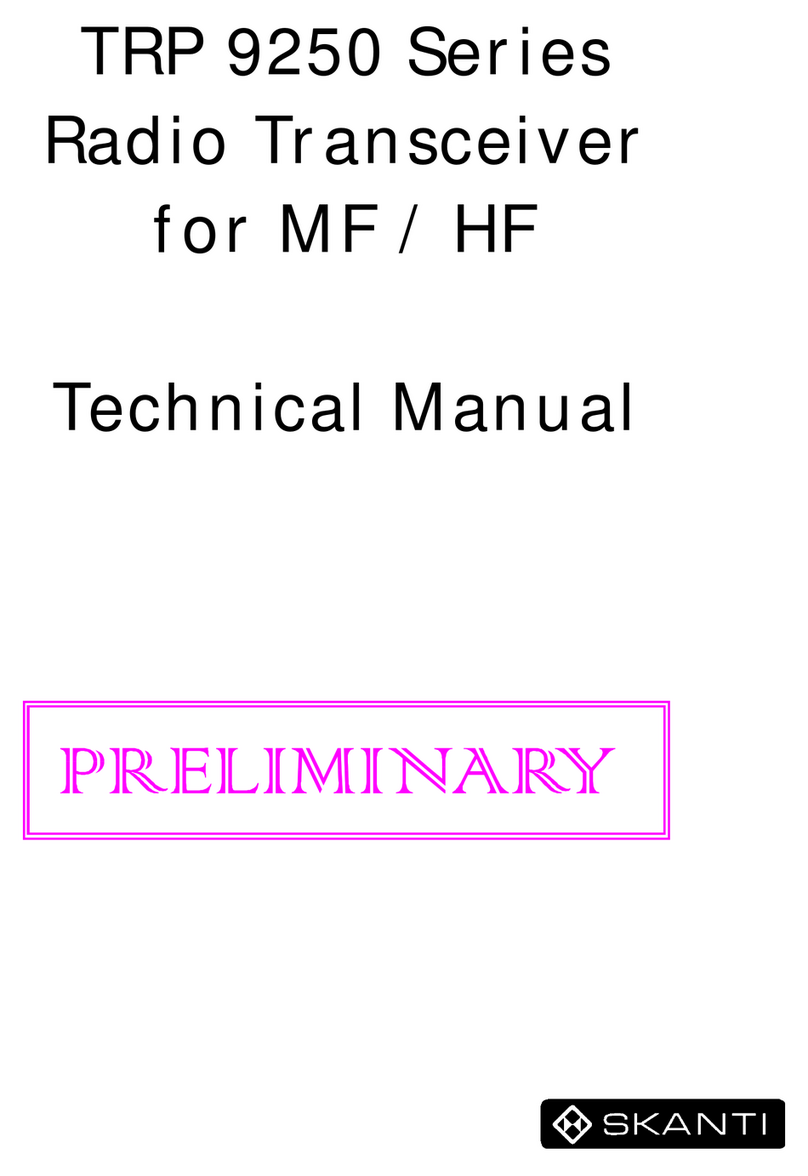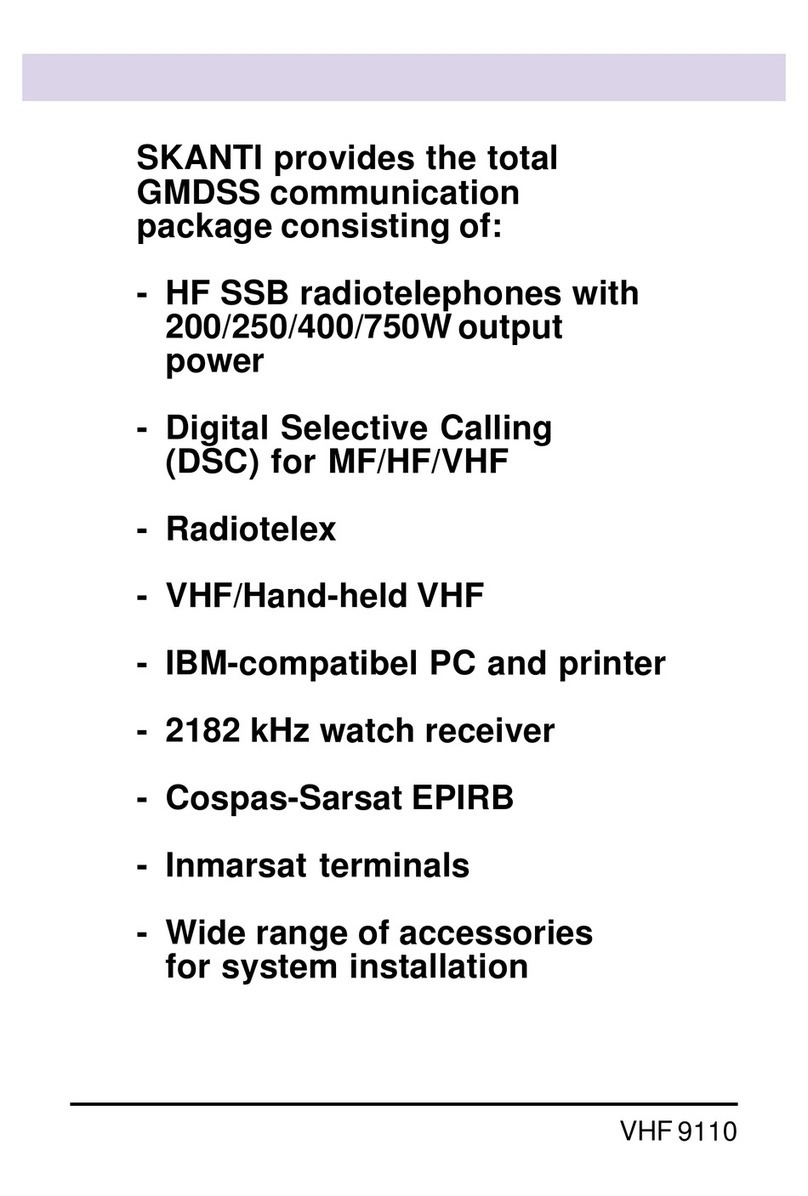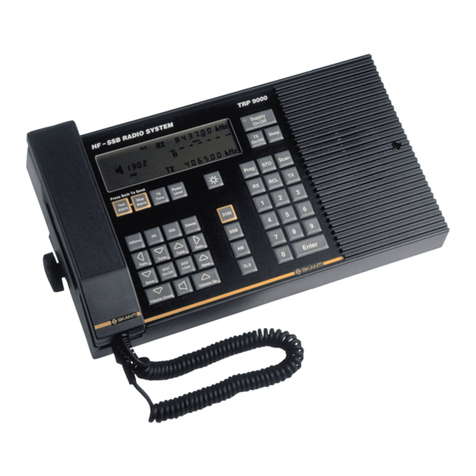
GENERAL DESCRIPTION
The TRP 9250 is a general purpose HF SSB
transceiverdesignedformaritimeapplications
covering the frequency range 1.6 - 30 MHz.
The standard version offers simplex and
semiduplex radiotelephone communication in
the maritime mobile bands and is intended for
installationin voluntarilyas wellas compulsor-
ilyfittedvessels.Withtheoptionalbuilt-inDSC
and Radiotelex the TRP 9250 forms a inte-
grated communication system ideal for
simplifiedGMDSSinstallations.TheTRP9500
can be fitted in the SKANTI COMBRIDGE
communication system for GMDSS.
The TRP9250 consists of a compact Trans-
ceiver Control Unit, a fully remote controlled
Transceiver Unit and an automatic Antenna
Tuning Unit. The Transceiver Control Unit,
TransceiverUnitandAntennaTuningUnitmay
be installed 100 m apart using standard
screenedcables.
One or two Control units are easily connected
to the same transceiver unit increasing the
flexibility of the installation.
The Transceiver Control Unit contains all re-
ceiver and transmitter operating controls. It is
fully push-button controlled by means of a
splash-proof keyboard with tactile and audible
feed-back . The LCD-display shows several
information including receive and transmit fre-
quencies, the mode of operation and time of
day. Back-light with dimmer function is in-
cluded for both LCD-display and keyboard to
ease operation in any light condition. Mode,
receiveandtransmitfrequencyset-upscanbe
stored and recalled directly from keyboard or
usedinconjunctionwiththe10scanprograms.
Sweeping of a selected frequency range is
also possible with the sweep function. Where
requiredbyauthoritiestransmitterfrequencies
can be preprogrammed into a PROM allowing
transmission only on these frequencies. The
compact Transceiver Control Unit is easily in-
stalled horizontally as well as vertically and
withtheoptionalrotatablewedgetiltedtofitany
installation.
The Transceiver Unit contains all receiver and
transmittercircuitry and all connections forex-
ternal equipment. The standard equipment
has a built-in two-tone alarm generator and
single key selection of 2182kHz. A squelch
circuit, an low noise RF-amplifier and RF-atte-
nuator are also included. The transceiver is
fully synthesized and the receiver may be
tuned in selectable steps of 1kHz, 100Hz and
10Hz.
The fully protected solid state 250W Power
Amplifier, cooled by forced convection, mat-
ches a 50 ohms antenna system, but is
normally used in connection with the Antenna
Tuning Unit.
In the standard version, the transmitter covers
the marine bands between 1.6 to 30MHz, but
an optional PA-filter is available which give
continuous coverage of the frequency range
1.6 to 30MHz.
The microprocessor controlled Antenna Tun-
ing Unit tunes automatically to all antennas
between 7 and 18 meters and requires no
presetting at the installation. The typical tune
time is less than to 0.5s.
The TRP 9250 is designed for 24V DC oper-
ation. Mains operation is possible with the
optional AC Power Supply Assembly installed
in the Transceiver Unit. A Battery Charger
Extension enables the AC Power Supply As-
sembly to be used as a battery charger.
The built-in test facilities and easy-to-replace
module design of the TRP 9250 simplifies the
serviceconcept.
GENERAL DESCRIPTION INTRODUCTION
TRP 9250 TECHNICAL MANUAL 1-3
































